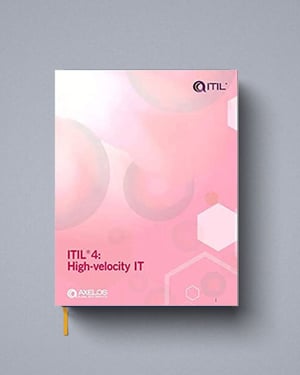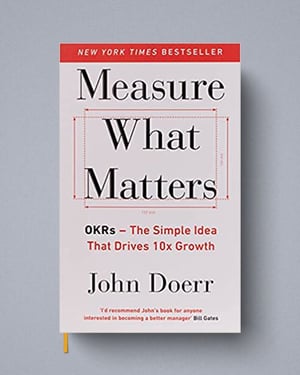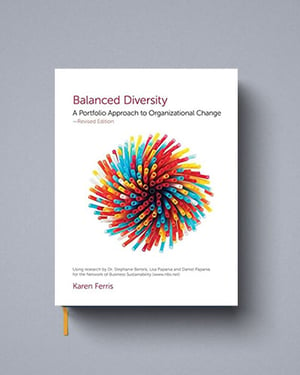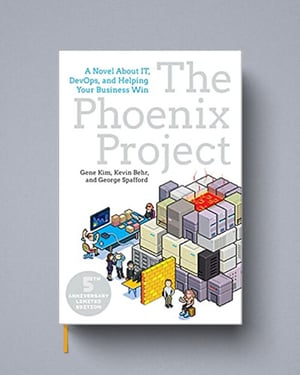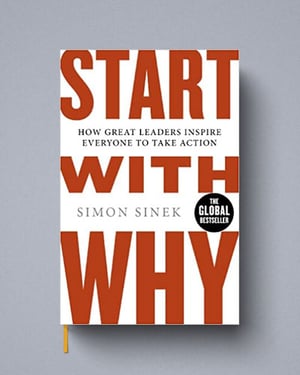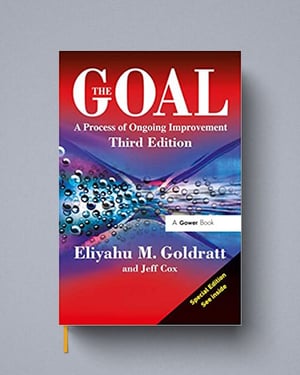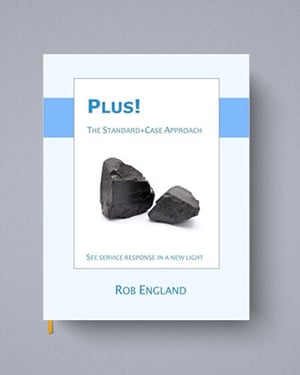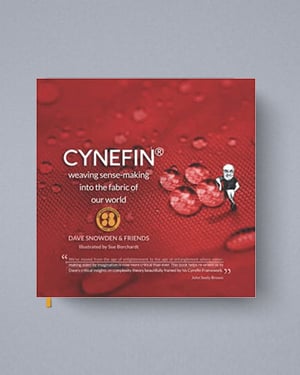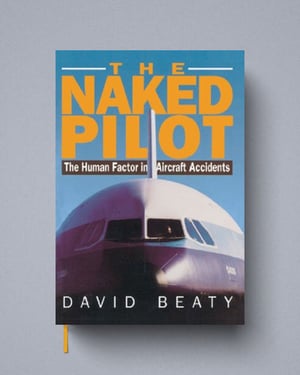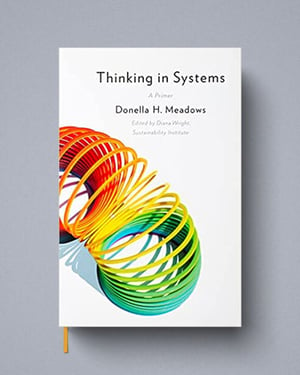Books! Who doesn’t love books? Whether you’re one for the latest thriller to top the charts, or you go-Instagram-crazy for the latest self-help book, the majority of us love to read. In fact it was reported that the global book market was expected to grow from $87.92 billion in 2020 to $92.68 billion in 2021, with that figure reaching $124.2 billion by 2025.
But what are your feelings when it comes to ‘business books’? Typically I find people love them or hate them, and I confess I was until recently more in the latter of those camps than the former. Business books can often feel contrived, repetitive, and quite often a waste of time if the message doesn’t resonate with you. Yet equally they can offer amazing opportunities to learn, improve, and reinvent yourself (or your business)... IF you read the right books.
So which books are the right books?
Of course opinions vary greatly, but in this article (which became so long I had to turn it into two articles - so stay tuned for the second part) I’ve pulled together a list of 28 books that are valuable reads for service desk, IT service management (ITSM) professionals, and IT asset management (ITAM) professionals. I confess I’ve not read every single book personally from this list, but I have consulted an astounding number of IT professionals on their opinions and sought their views on which books are worthy of their place in this article. Tie that in with reading an extensive number of independent reviews of each book, and voila we have a list.
In order to best explain each book and what it’s about, I’ve included the official book blurb (I apologise, you might need to take a deep breath as you read excessive amounts of marketing jargon in some of them - don’t judge a book by its cover (see what I did there) and let it put you off reading the book(s) themselves), in addition to why I (or someone far cleverer than me) thinks you should read it.
So… here we go… in no particular order, the first 14 of 28 book recommendations.
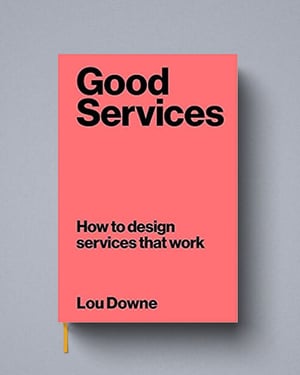 |
Good Services: How to Design Services That Work, by Louise Downe |
About the book
Service design is a rapidly growing area of interest in design and business management. There are a lot of books on how to get started, but this is the first book that describes what a 'good' service is and how to design one. This book lays out the essential principles for building services that work well for users. Demystifying what we mean by a 'good' and 'bad' service and describing the common elements within all services that mean they either work for users or don't.
A practical book for practitioners and non-practitioners alike interested in better service delivery, this book is the definitive new guide to designing services that work for users.
Why you should read it
A great book for anyone working within service delivery. Downe talks you through 15 points about what a good service is, explains each of those points, and gets us thinking about the quality of what we’re doing, of the services we help build, and of the service we provide. Better yet, the book is packed full of practical examples and case studies.
About the book
This guide explores the ways in which digital organisations and digital operating models function in high velocity environments. ITIL 4 High Velocity IT will: (i) help practitioners to operate in a similar way to successful digitally native organisations; (ii) cover the use of working practices such as Agile and Lean, and technical practices and technologies such as Cloud, Automation, and Automatic testing focussing on rapid delivery of products and services for maximum value; (iii) act as a reference guide that practitioners can use in their work, further studies and professional development.
Why you should read it
If you only read one ITIL 4 publication, make it this one. This module gives people a thought process for how to adopt agile ways of working and to understand how an organization can be more automated, smarter, and accessible, in our ever-changing world.
In addition, for ITIL practitioners transitioning from ITIL v3, this book will improve your understanding of value streams and co-creation of value. Disclaimer: it is the most expensive book on our list!
About the book
Measure What Matters is about using Objectives and Key Results (OKRs), a revolutionary approach to goal-setting, to make tough choices in business.
In the book Doerr shares a broad range of first-person, behind-the-scenes case studies, with narrators including Bono and Bill Gates, to demonstrate the focus, agility, and explosive growth that OKRs have spurred at so many great organizations.
This book will show you how to collect timely, relevant data to track progress - to measure what matters. It will help any organization or team aim high, move fast, and excel.
Why you should read it
This book talks about the importance of goal setting and measuring goals, and how we can use OKR as a framework for personal and business achievements.
As we know, most service desks are still very KPI driven (despite the industry shift away from SLAs to XLAs); KPIs which can often be focused on the wrong things. But are you measuring what matters? If your answer to that question isn’t a resounding yes, then I’d suggest adding this book to your reading list.
About the book
Successfully embedding change is one of the biggest challenges faced by organizations. This publication explores what is meant by organisational culture, looks at the challenges faced by those trying to embed ITSM change, and proposes the adoption of a new and innovative framework which provides a portfolio approach. The framework can be used for strategic, tactical and operational change of all sizes and complexity, and covers: what the challenges are; the framework — what is trying to be accomplished; the portfolio approach; commitment; expectations; building momentum and application.
Why you should read it
This book provides a framework that positions you to use organizational change management (OCM) tools and techniques to help ensure that change sticks in whatever business or industry you work in. Every organization is going through some form of change, whether it be related to digital transformation or the impact of COVID-19, but whether you succeed with that change, well that’s another thing altogether, which is exactly why you need to read this book.
As an added bonus for those working in service management, it also provides case studies on how to use OCM practices in the world of ITSM.
About the book
Bill is an IT manager at Parts Unlimited. It's Tuesday morning and on his drive into the office, Bill gets a call from the CEO. The company's new IT initiative, code named Phoenix Project, is critical to the future of Parts Unlimited, but the project is massively over budget and very late. The CEO wants Bill to report directly to him and fix the mess in ninety days or else Bill's entire department will be outsourced.
With the help of a prospective board member and his mysterious philosophy of The Three Ways, Bill starts to see that IT work has more in common with manufacturing plant work than he ever imagined. With the clock ticking, Bill must organize workflow streamline interdepartmental communications, and effectively serve the other business functions at Parts Unlimited.
In a fast-paced and entertaining style, three luminaries of the DevOps movement deliver a story that anyone who works in IT will recognize. Readers will not only learn how to improve their own IT organizations, they'll never view IT the same way again.
Why you should read it
So, as you can probably gather from the blurb, this book is basically a business/IT management book thinly disguised as a novel. Are you cringing yet? Because those were my thoughts exactly. Surprisingly though, it works, and it does a great job of capturing a lot of the realities of working in an IT department.
With a strong emphasis on DevOps and Agile methodologies, if you’re looking to improve IT operations then you need a copy of this book. It’s been that well received by the IT industry as a whole that The Phoenix Project almost has its own cult following now. So if for no other reason, read it to be a cool kid.
About the book
In 2009, Simon Sinek started a movement to help people become more inspired at work, and in turn inspire their colleagues and customers. People like Martin Luther King Jr., Steve Jobs, and the Wright Brothers had little in common, but they all started with WHY. They realized that people won’t truly buy into a product, service, movement, or idea until they understand the WHY behind it.
Start With Why shows that the leaders who’ve had the greatest influence in the world all think, act, and communicate the same way — and it’s the opposite of what everyone else does. Sinek calls this powerful idea The Golden Circle, and it provides a framework upon which organizations can be built, movements can be led, and people can be inspired. And it all starts with WHY.
Why you should read it
The idea of starting with WHY seems obvious to many, but is something very few of us do. Organizations more often than not focus on the WHAT (think: metrics) and the HOW (think: process) — both of which are important. However neglecting to think about the WHY or purpose makes an organization and/or an individual vulnerable to failure.
In this book Sinek introduces the concept of 'The Golden Circle', which has three layers of WHY at the core, followed by HOW, followed by WHAT. He explains that when we have the clarity of WHY we do, know the HOW we can do, and maintain consistency of the WHAT we do, then we can be successful in anything.
A great read for leaders and/or anyone who is interested in the human mind.
About the book
Alex Rogo is a harried plant manager working ever more desperately to try and improve performance. His factory is rapidly heading for disaster. So is his marriage. He has ninety days to save his plant—or it will be closed by corporate HQ, with hundreds of job losses. It takes a chance meeting with a colleague from student days—Jonah—to help him break out of conventional ways of thinking to see what needs to be done.
The story of Alex's fight to save his plant is more than compulsive reading. It contains a serious message for all managers in industry and explains the ideas which underline the Theory of Constraints (TOC) developed by Eli Goldratt
Why you should read it
The Goal is an excellent introduction to ToC - a process improvement methodology that emphasizes the importance of identifying bottlenecks. Applicable to anyone in business, not just IT, the book also serves as a great starting point for learning about lean management.
One of my favourite things about this book is that it doesn’t read as a business book, as it’s approached as a story. So it will make a nice change if you’re reading it alongside some of the other books on this list. If you typically hate management books, you’ll probably like this one. Follow it up with The Phoenix Project for maximum learning.
About the book
If your customers see your group as bureaucratic and inflexible... If your staff feel process bound... If your process doesn't adapt to a changing world... See service response in a new light. Standard+Case is an exciting new approach to categorizing and resolving any sort of response activity, such as service desk, tech support, public safety, social welfare, or health. If you have anything to do with responding to situations when providing a service, read this. It will change your view of how responses are handled.
Why you should read it
Aimed at all service management practitioners, but specifically ITSM practitioners, this book introduces case management to IT with the aim of getting you to work smarter. In it England shares his views of how IT organizations should respond to: incidents, problems, changes, requests, events or anything else that needs a managed response; and what he presents is a very clear model as to how you can better manage and deliver IT services to your organization.
If you’re looking to improve your approach to ITSM and/or get better at what you’re doing in IT support, then you can learn a lot from this book.
About the book
The Cynefin® sense-making Framework, brainchild of innovative thinker Dave Snowden, has never been more needed. The Framework empowers leaders across organizations, governments, and local communities, to work with uncertainty – to navigate complexity, create resilience, and thrive. As Snowden says, “The Framework guides us to make sense of the world, so that we can skillfully act in it.” Come with us on the remarkable 21-year journey of Cynefin, a framework that enables people from all walks of life to improve – their situation, their work, their business, their relationships, and their environment. Cynefin practitioners share their wisdom, applications, and experiences using the Framework, across healthcare, leadership facilitation, organizational behavior, safety, software development, strategy, and well-being. You’ll discover how to not only ‘ride the rapids of complexity,’ but find in so doing, grace, power, and inexplicable opportunity.
Why you should read it
I’m actually going to tell you NOT to read this book (unless you’re super familiar with Cynefin already, in which case please order your copy now). Instead I’m going to suggest you google the Cynefin Framework and its author Dave Snowden, and read up on an introduction to the Cynefin Framework and then take it from there. You may find this Harvard Business Review article useful.
I’ve been fortunate enough to see Dave speak at a few events over the years’ and I’m yet to find another presenter who can hold my attention and fascinate me as much each time I hear them speak. I confess I usually only understand 50% of it (Dave is a supremely clever man), but I look forward to the day my brain catches up and allows me to understand the rest.
It’s for this reason I suggest skipping the book until you’ve taken the time to understand the framework, otherwise I think you might look for answers in the book that aren’t there.
Investigations into the causes of aircraft accidents have for decades focused on what happened and who did it - very rarely 'Why'? It is the question 'Why' that David Beaty has addressed here, fighting the misnomer of 'pilot error' and propounding that the cause should be sought deeper inside human beings who make apparently simple human errors.
Why you should read it
At first glance you might wonder why on earth a book about pilots is on my list, and you’d be right to wonder as I almost didn’t include it. However, after it being recommended by so many people when researching for this article I decided to give it a read to better understand why people thought it was a valuable read to the IT industry.
The fact is, the findings in this book are interesting to anyone working with complex systems that involve human interaction. I don’t know how else to explain its value without giving a full run down on the book, so you’re just going to have to trust me on this one.
About the book
Some of the biggest problems facing the world—war, hunger, poverty, and environmental degradation—are essentially system failures. They cannot be solved by fixing one piece in isolation from the others, because even seemingly minor details have enormous power to undermine the best efforts of too-narrow thinking.
While readers will learn the conceptual tools and methods of systems thinking, the heart of the book is grander than methodology. Donella Meadows was known as much for nurturing positive outcomes as she was for delving into the science behind global dilemmas. She reminds readers to pay attention to what is important, not just what is quantifiable, to stay humble, and to stay a learner.
In a world growing ever more complicated, crowded, and interdependent, Thinking in Systems helps readers avoid confusion and helplessness, the first step toward finding proactive and effective solutions.
Why you should read it
In this book Meadows is able to break down a complex, scientific, and mathematical subject into easy-to-understand diagrams and concepts. Whether you’re new to, or familiar with, Systems Thinking, this book will help you understand more about it and give you the knowledge you need to be able to apply it immediately in your work environment. Applicable to all roles within IT, and to be honest anyone anywhere in the world, I’d definitely put this one high on your ‘to-read’ list.
About the book
Systems thinking can help us solve everyday and wicked problems, increase our personal effectiveness as human beings, and transform our organizations. This book is for anyone interested in learning the foundational ideas of systems thinking.
Systems Thinking Made Simple doesn't mean that we're going to oversimplify it like a ... for Dummies book. It means that we will show how systems thinking emerges when we focus on a simple set of rules. After years of searching for unifying principles, many experts and practitioners in the field of systems thinking have embraced DSRP as universal to all systems thinking methods. Originally a complex mathematical formulation, DSRP has since been made more accessible through powerful modeling and visualization tools.
There are two surprising things about our new understanding of systems thinking. First is how simple the four rules are: DISTINCTIONS RULE: Any idea or thing can be distinguished from the other ideas or things it is with SYSTEMS RULE: Any idea or thing can be split into parts or lumped into a whole RELATIONSHIP RULE: Any idea or thing can relate to other things or ideas PERSPECTIVES RULE: Any thing or idea can be the point or the view of a perspective.
Why you should read it
Simply put, it’s a great introduction to Systems Thinking. Perfect for beginners looking to develop their Systems Thinking skills. Don’t fancy Thinking in Systems, try this instead.
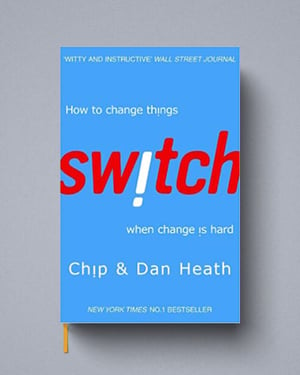 |
Switch – How to Change Things When Change is Hard – Dan Heath and Chip Heath |
About the book
We all know that change is hard. It's unsettling, it's time-consuming, and all too often we give up at the first sign of a setback.
But why do we insist on seeing the obstacles rather than the goal? This is the question that bestselling authors Chip and Dan Heath tackle in their compelling and insightful book. They argue that we need only understand how our minds function in order to unlock shortcuts to switches in behaviour.
Illustrating their ideas with scientific studies and remarkable real-life turnarounds - from the secrets of successful marriage counselling to the pile of gloves that transformed one company's finances - the brothers Heath prove that deceptively simple methods can yield truly extraordinary results.
Why you should read it
This should probably be mandatory reading for everybody because the process the authors describe for change is relevant to personal and family life as well as to organizational change. I particularly liked the examples of real life success and failure stories along with the explanations of whys.
Whether you’re navigating your organization through complex changes, or there is something you want to change about yourself, this book is packed with advice applicable to any and all change-related situations.
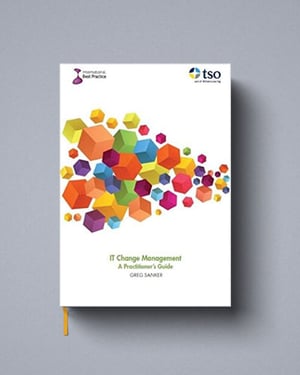 |
IT Change Management: A Practitioner’s Guide, by Greg Sanker |
About the book
Essential reading for anyone wishing to understand how IT change management can be implemented and put into practice within the workplace. It bridges the gap between best-practice training and the realities faced in real-world implementation. The roles of people involved, the challenges they will face and how to overcome those challenges are discussed in de- tail. This practical guidance focuses on business value and outcomes above process, and will ensure practi-tioners can effectively manage IT changes in the context of their organization, regardless of the frameworks chosen.
Why you should read it
To be honest, it’s as the blurb says - essential reading for anyone wishing to understand how IT change management (or change enablement as it’s now known in ITIL 4) can be implemented and put into practice within the workplace. Sanker is pretty much the leading industry authority when it comes to the topic of change management/enablement, so if you work in a Change-related role this book is a must-read.
Hope you enjoy our selections for best books about ITSM -- we'll be posting more suggestions in future posts!












